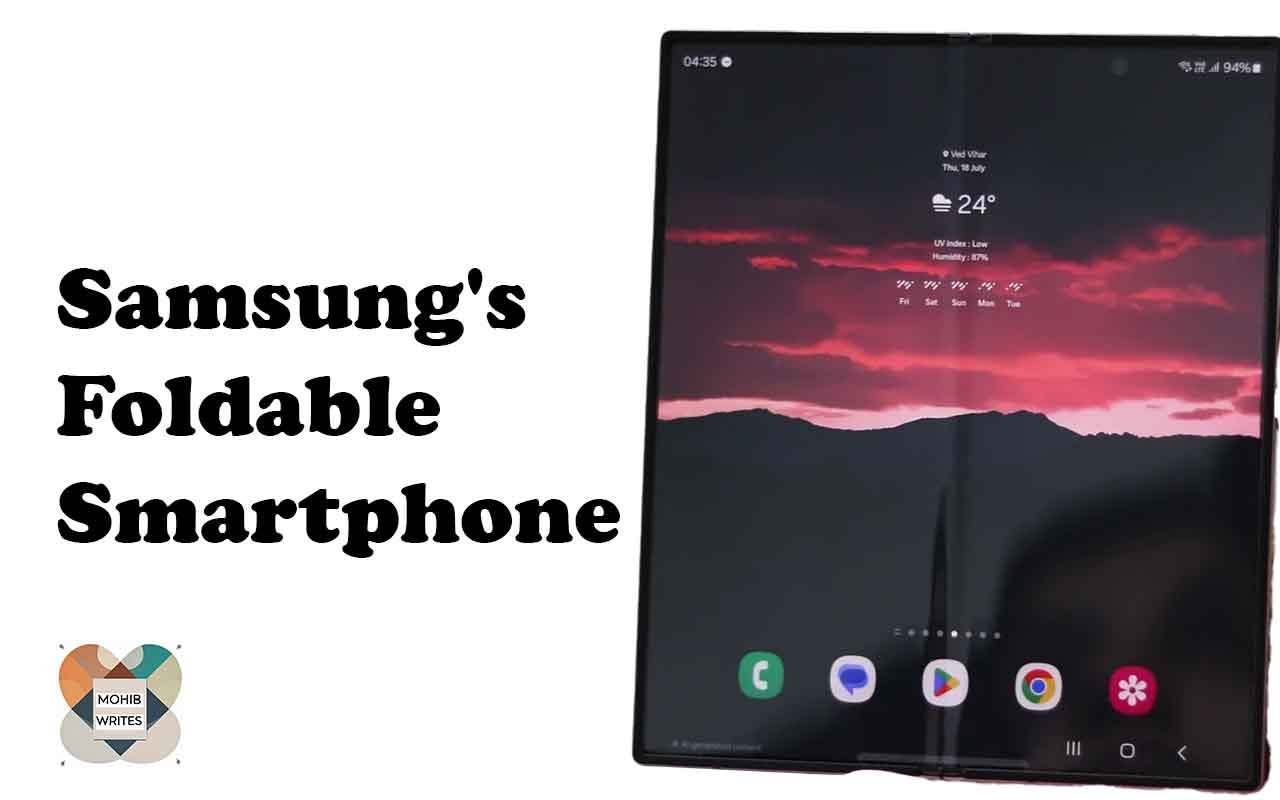Samsung’s Galaxy G Fold is generating buzz as the company’s first-ever tri-foldable smartphone, but does it truly deliver? As of July 2025, while this device showcases Samsung’s innovation, it feels more like a tech experiment than a practical phone for everyday users. Let’s dive into why the Galaxy G Fold raises more questions than answers and what this means for foldable phones in general.
What is the Samsung Galaxy G Fold?
The Galaxy G Fold is Samsung’s rumored upcoming tri-fold phone, expected to be unveiled alongside the Galaxy Z Fold 7 and Z Flip 7 at the July 9 Galaxy Unpacked event. Unlike Samsung’s previous foldables, which fold once, this device folds twice — creating three screen sections. The result? A massive display around 10 inches, rivaling devices like the Huawei Mate XT’s 10.2-inch screen.
Why Does the Galaxy G Fold Feel Like a Proof of Concept?
1. Samsung’s Limited Production Run
Reports suggest Samsung will produce the Galaxy G Fold in very limited quantities as a “trial run.” This implies the company isn’t fully confident this model is ready for mass adoption. It seems more like a statement of innovation, proving Samsung can build a tri-fold device, rather than something designed for everyday users.
2. Who Is This Phone Really For?
The average phone buyer likely won’t be the target audience. At an expected price north of $3,000 — far exceeding the Galaxy Z Fold 6’s $1,899 price tag — it’s a luxury item, more of a collector’s gadget than a practical phone. For that price, you could buy a high-end smartphone and a tablet separately.
3. Usability Concerns: Triple Folding Complexity
Opening and handling a phone that folds twice sounds cool on paper, but how easy will it be in real life? Even current foldables like the Galaxy Z Fold 5 can be awkward to open in public or use comfortably. Folding and unfolding three sections could become cumbersome, reducing convenience and daily practicality.
4. Lack of Essential Features
Rumors claim the Galaxy G Fold will not support the S Pen stylus due to missing a digitizer layer on the large screen. This is a puzzling decision — one that restricts creativity and productivity options on a device with a huge display area perfect for drawing or note-taking.
5. App Compatibility Challenges
Even with the Galaxy Z Fold 5, some apps don’t fully take advantage of the larger screens. Streaming apps like Disney+ only use part of the screen, limiting the viewing experience. A tri-fold screen will make this worse, as developers may hesitate to optimize apps for a device with a small user base.
What Samsung Might Be Trying to Prove
Samsung has faced criticism for rehashing the same hardware and relying on software tweaks to push new phones. The Galaxy G Fold could be a way to shout, “We still innovate!” A limited release creates hype and entices enthusiasts, but it’s unclear if this strategy will pay off beyond showcasing engineering prowess.
Real-World Examples: Foldables Today
- Galaxy Z Fold 6: Priced at $1,899, it offers an 8-inch folding display and support for the S Pen. It’s seen as the current benchmark for foldables.
- Huawei Mate XT: Featuring a 10.2-inch tri-fold screen, priced around $2,800, but also limited in market reach.
- Galaxy Z Fold 5: Demonstrated foldables can be practical for streaming and multitasking, but app support still lags.
These examples show foldables are advancing but remain niche.
How Much Will the Galaxy G Fold Cost?
Estimates suggest the G Fold could cost as much as $3,500, placing it in ultra-premium territory. For most people, that price is simply unrealistic. It’s a device aimed at early adopters and tech fans rather than mainstream consumers.
Should You Be Excited About the Galaxy G Fold?
If you love cutting-edge tech and want to experience Samsung’s latest innovation, the G Fold could be fascinating. But for most users, it feels like a novelty rather than a must-have phone. Its size, price, and usability issues may outweigh the benefits of a triple-fold screen.
What’s Next for Foldable Phones?
The Galaxy G Fold might be just the beginning. It could pave the way for future tri-fold phones that address current shortcomings and become more user-friendly. For now, though, it’s a prototype-level device that raises as many doubts as it excites.
Conclusion
Samsung’s Galaxy G Fold is an impressive feat of engineering but feels more like a proof of concept than a practical phone for the everyday user. Its limited production, high price, tricky usability, and lack of essential features like S Pen support hold it back from being a mainstream hit. However, it does signal Samsung’s continued commitment to pushing foldable tech forward. Whether the Galaxy G Fold evolves into a viable phone or remains a niche curiosity remains to be seen.
FAQs About Samsung Galaxy G Fold
Samsung is expected to unveil the Galaxy G Fold at the Galaxy Unpacked event on July 9, 2025, but only limited units will be made initially.
The device is rumored to cost up to $3,500, making it one of the most expensive phones on the market.
No, rumors indicate that the G Fold won’t have a digitizer layer, meaning it won’t support the S Pen, limiting productivity features.
Unlike typical foldables that fold once, the Galaxy G Fold folds twice, creating three screen sections, which can make the phone larger but harder to handle.
Currently, many apps do not fully utilize large foldable screens. This problem may be even greater with a tri-fold display, reducing the benefit of the bigger screen.


